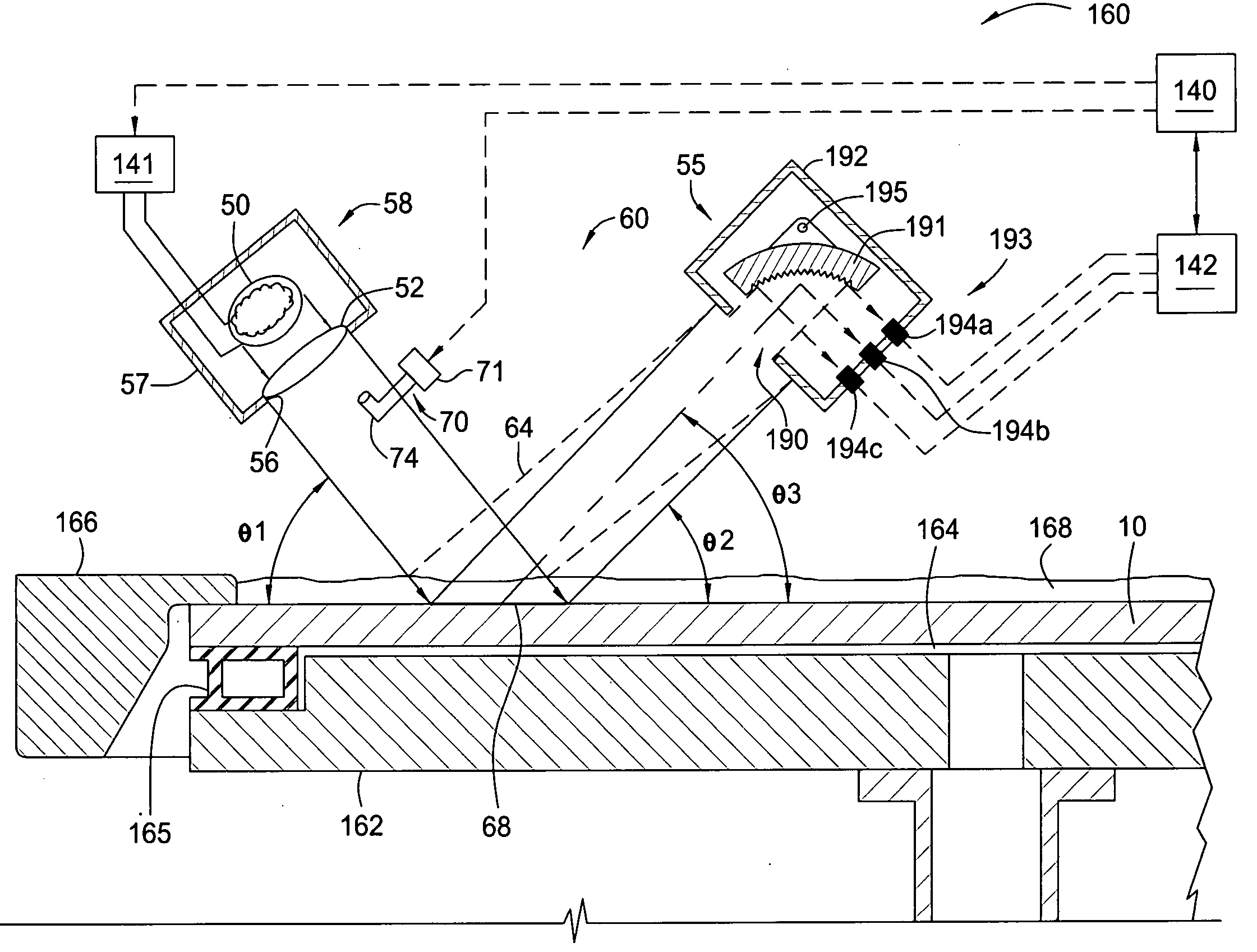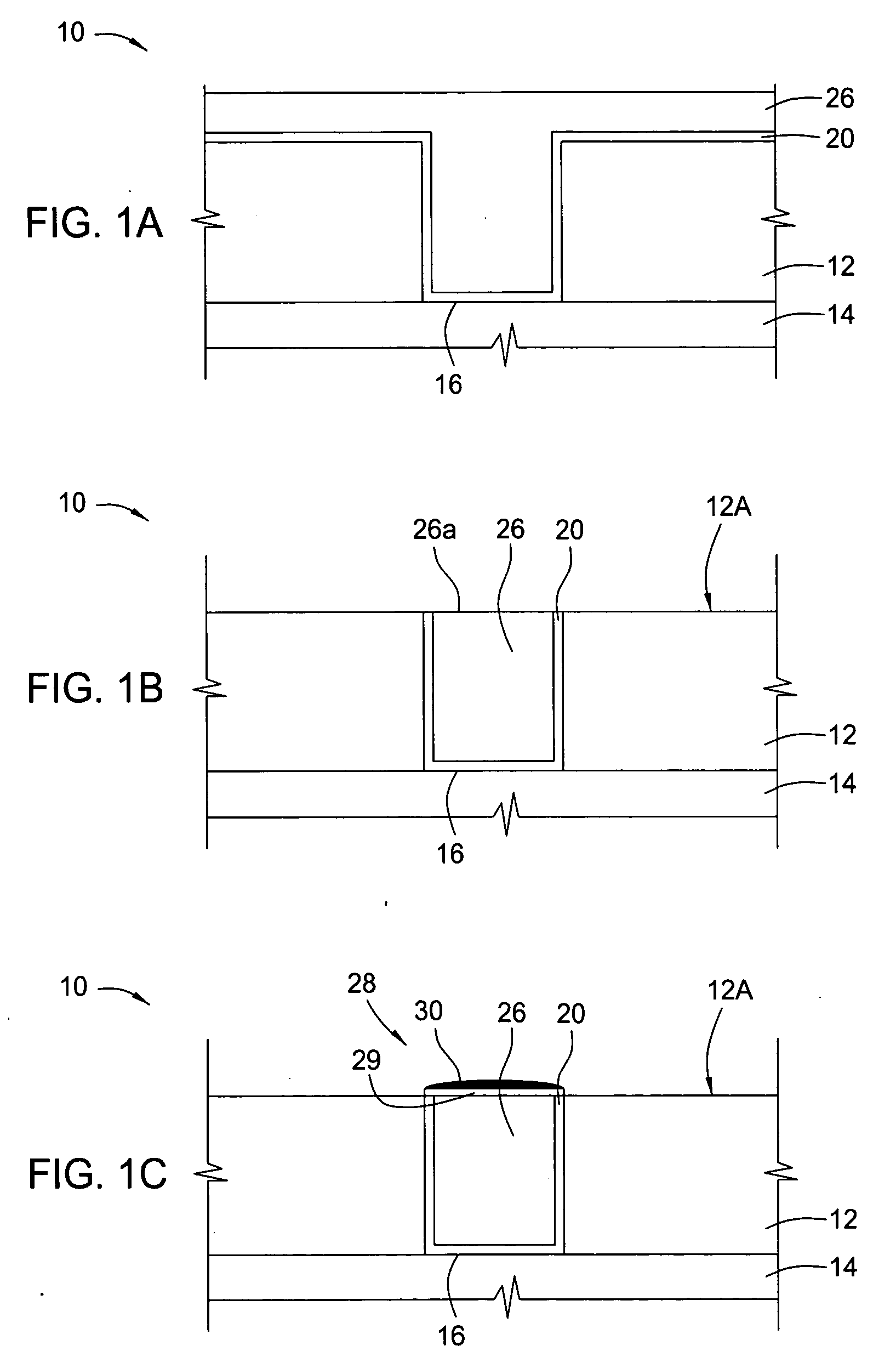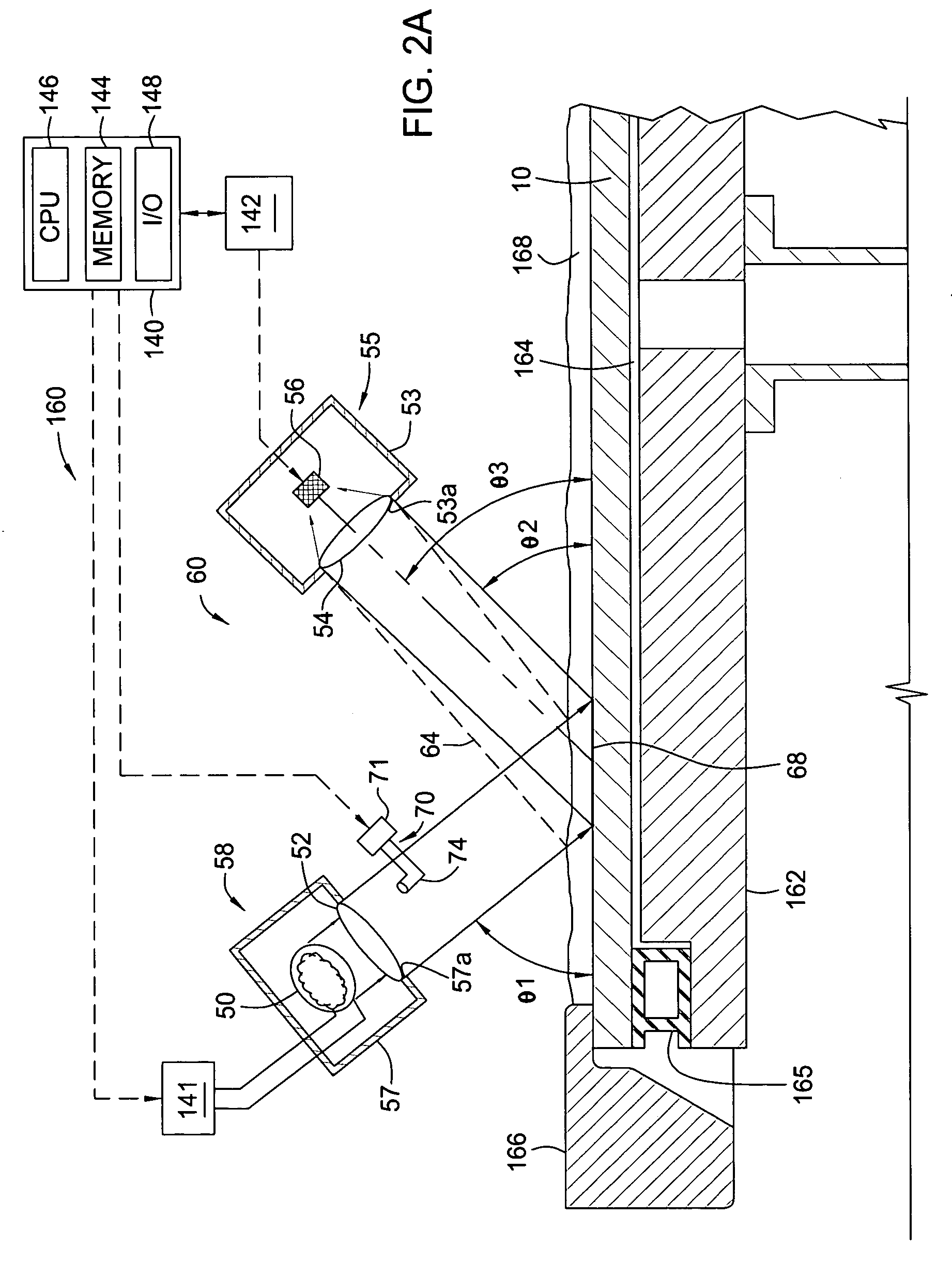Apparatus and method of detecting the electroless deposition endpoint
a technology of electroless deposition and endpoint, which is applied in the direction of optical radiation measurement, semiconductor/solid-state device testing/measurement, instruments, etc., can solve the problems of affecting the reliability of connections, adding a great deal of complexity to the device forming process, and electroless deposition techniques that have not been extensively used for forming interconnects in vlsi and ulsi semiconductors
- Summary
- Abstract
- Description
- Claims
- Application Information
AI Technical Summary
Benefits of technology
Problems solved by technology
Method used
Image
Examples
Embodiment Construction
[0050]FIG. 1A shows a schematic cross-sectional view of a substrate base 14 formed on a substrate 10 and filled by a physical vapor deposition (PVD), Chemical vapor deposition (CVD), electrochemical deposition (ECP), electroless deposition, or a molecular beam epitaxy (MBE) process. The substrate 10 refers to any workpiece upon which film processing is performed. For example, the substrate 10 may be a silicon semiconductor substrate (or wafer), or other material layer that has been formed on the substrate. A dielectric layer 12 is deposited over the substrate. The dielectric layer 12 is generally an oxide, a silicon oxide, carbon-silicon-oxide, a fluoro-silicon, a porous dielectric, or other suitable dielectric. The dielectric layer 12 is patterned to provide a feature 16, such as a via, trench, contact hole, or line extending to an exposed surface portion of the substrate base 14. It is also understood by those with skill in the art that the present invention may be used in a dual ...
PUM
| Property | Measurement | Unit |
|---|---|---|
| wavelengths | aaaaa | aaaaa |
| wavelengths | aaaaa | aaaaa |
| thickness | aaaaa | aaaaa |
Abstract
Description
Claims
Application Information
 Login to View More
Login to View More - R&D
- Intellectual Property
- Life Sciences
- Materials
- Tech Scout
- Unparalleled Data Quality
- Higher Quality Content
- 60% Fewer Hallucinations
Browse by: Latest US Patents, China's latest patents, Technical Efficacy Thesaurus, Application Domain, Technology Topic, Popular Technical Reports.
© 2025 PatSnap. All rights reserved.Legal|Privacy policy|Modern Slavery Act Transparency Statement|Sitemap|About US| Contact US: help@patsnap.com



